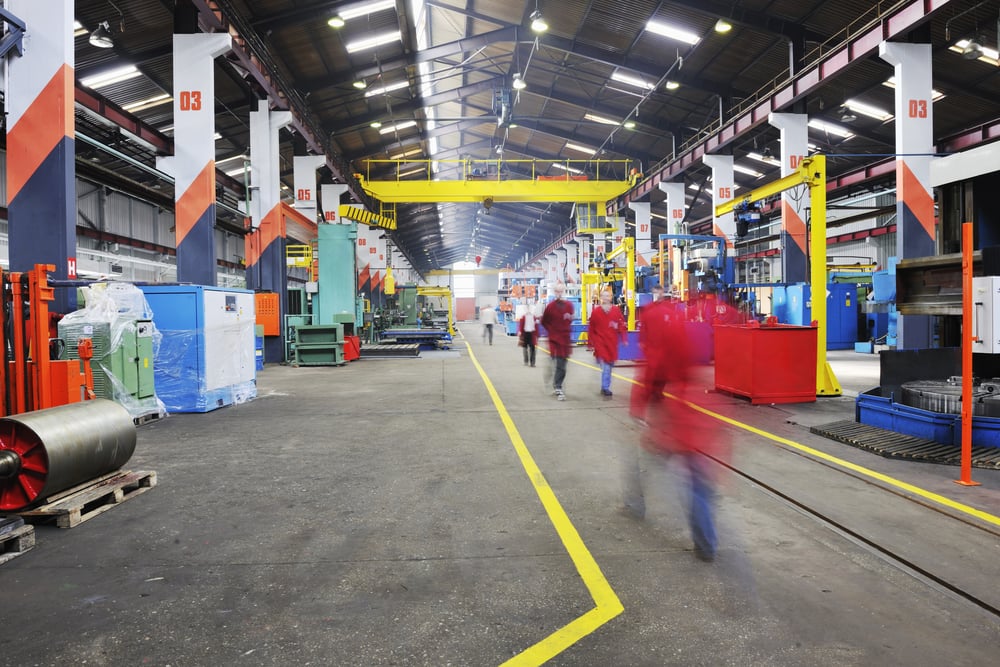PlantStar BLOG
Lower Manufacturing Costs Through Lean Process Improvements
Dec 12, 2023 9:58:18 AM / by David Crowley

Manufacturing is a highly competitive, constantly changing industry, putting suppliers under constant pressure. Lean manufacturing strategies focus on process optimization. Its tools, techniques, and methodologies, like value stream mapping, 5S, kanban, total productive maintenance, and visual management, help manufacturers create cost-effective processes, eliminate waste, optimize workflow, continuously improve the organization, and increase revenue and profitability.
What Is Lean Manufacturing?
Lean manufacturing is a philosophy that aims to maximize operational efficiency in manufacturing facilities. Developed by Toyota in the 1950s, the methodology continues to influence the manufacturing industry today. The approach concentrates on getting rid of practices that detract from a product’s value and creating more benefits for customers.
Implementing lean production techniques is not a one-and-done process; it's a continuous effort. No matter how well a manufacturing plant operates, it can do better. That mindset leads to ongoing manufacturing and supply chain optimization. The philosophy has spawned a number of manufacturing best practices that reduce manufacturing costs, streamline workflow, and boost productivity.
Value Stream Mapping Improves Cost Efficiency
Value stream mapping attempts to identify and eliminate any non-value steps in the supply chain and production processes. It designs, analyzes, and manages the flow of materials and information from the start of an action until its completion. This approach visually represents what is occurring at each step. By seeing how materials move and how goods are produced, suppliers get a clearer picture of what is working and what needs to be enhanced in their operations.
5S Streamlines and Standardizes Workplace Organization
5S is a workplace organization methodology that originated in Japan. The term 5S stands for its steps: sort, set in order, shine, standardize, and sustain. The primary goal of 5S is to create a clean, organized, and efficient workplace. The rationale is that such an emphasis leads to improvements in productivity, safety, and employee morale.
Kanban Reduces Manufacturing Costs
Kanban is a Japanese word that means visual card or signal and is applied to inventory control systems. Like 5S, the methodology emphasizes visual displays to help employees manage the flow of materials and information within a manufacturing plant.
Total Productive Maintenance Emphasizes Proactivity
Total productive maintenance (TPM) is a comprehensive approach to maintenance that aims to maximize the efficiency and effectiveness of plant equipment. Traditional maintenance practices have been reactive, initiating repairs after equipment fails. TPM tries to eliminate losses or waste in the production process with proactive and preventive maintenance. Under a TPM model, devices are serviced before they malfunction, improving uptime and enhancing productivity. With TPM, operators are actively involved in the care and maintenance of their equipment. They understand how devices work and perform routine tasks, inspections, and minor repairs to prevent breakdowns and keep the production line humming.
Small Lot Production Delivers Flexibility
Small lot production, sometimes dubbed, low-volume manufacturing, breaks manufacturing runs up into a number of short steps. The opposite is mass production, where large quantities of identical items are produced to achieve economies of scale, Small lot production’s benefits are greater flexibility: Companies respond faster to changes in material availability, equipment performance, customer demand, and product specifications. This ability is particularly important when dealing with niche markets where clients desire customized pieces.
Error Proofing Reduces Mistakes
Error proofing focuses on manufacturing flaws and implementing cost-cutting measures in production. The goal is to prevent any errors from occurring. If a problem does arise, it is immediately detected and addressed. Sensors, visual inspections, or automated checks can help companies correct problems before they affect the next stage of production. This could require stopping the production process, alerting operators, or automatically taking the system offline. Error proofing strives to enhance product quality, reduce defects, and improve internal processes.
What Makes Lean Manufacturing Successful?
Lean manufacturing is a comprehensive approach. The goal is not simply to cut costs in the short term but instead to build a culture where processes are consistently refined over time. The benefits are long-lasting reductions in operating expenses and inventory costs. Companies can choose how to adopt lean manufacturing, implementing the ideals throughout the organization or using them in select areas—perhaps those that are performing most inefficiently. Like most initiatives, however, the success of lean manufacturing programs relies on buy-in from top management. Organizations with executives who firmly believe in lean principles and lead by example gain more from their adoption than those whose focus is elsewhere.
Suppliers are constantly on the lookout for ways to improve their operations. Lean manufacturing enables businesses to build a culture of ongoing improvement that consistently refines processes over time. Lean manufacturing provides cost-effective process innovation, streamlines production, reduces costs and waste, uses resources more efficiently, and delivers quality improvements. Consequently, it has become a staple in many manufacturing organizations.
A a manufacturing execution system (MES) is a vital tool in building a leaner manufacturing operation. A properly implemented MES provides real-time visibility into manufacturing process, empowering employees to address issues at their outset. When staff can nip problems in the bud, the whole operation can run more effectively and suffer fewer disruptions. To learn more about MES, see our MES 101 page or browse the PlantStar blog.
Subscribe to Email Updates
Posts by Topic
- Manufacturing Execution Systems (38)
- manufacturing solutions (16)
- MES 101 (13)
- Industry 4.0 (11)
- improve efficiency (10)
- Plastic Molding (9)
- Plastics Technology (9)
- mes software (9)
- mes solutions (9)
- MES hardware (8)
- Shop Floor Production (8)
- digital transformation (7)
- Reduce scrap (6)
- data-driven-decisions (6)
- Medical molding (5)
- lean manufacturing (5)
- process monitoring (5)
- product quality (5)
- lights-out manufacturing (4)
- manufacturing dashboard (4)
- production monitoring (4)
- ERP integration (3)
- Shop Floor Safety (3)
- supply chain management (3)
- Injection Molding Technology (2)
- defect collection (2)
- machine mes (2)
- process variables (2)
- digital strategy (1)
- labor gap (1)
- throughput (1)
Related Articles


